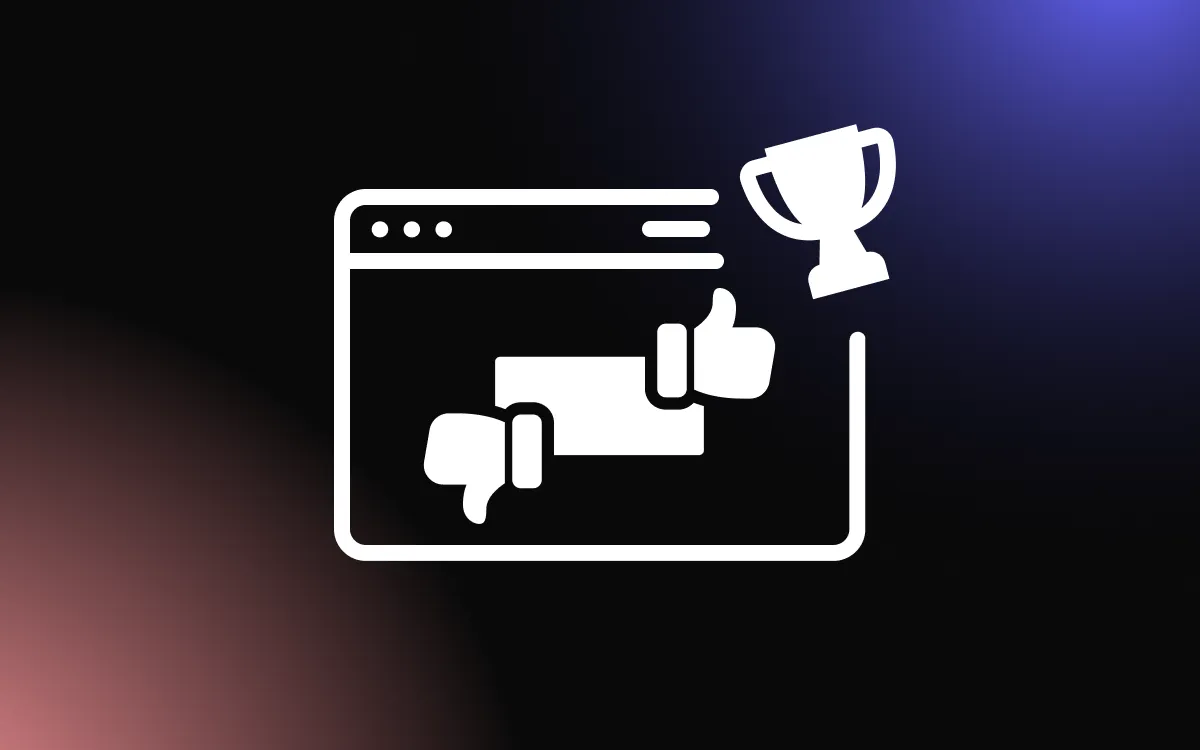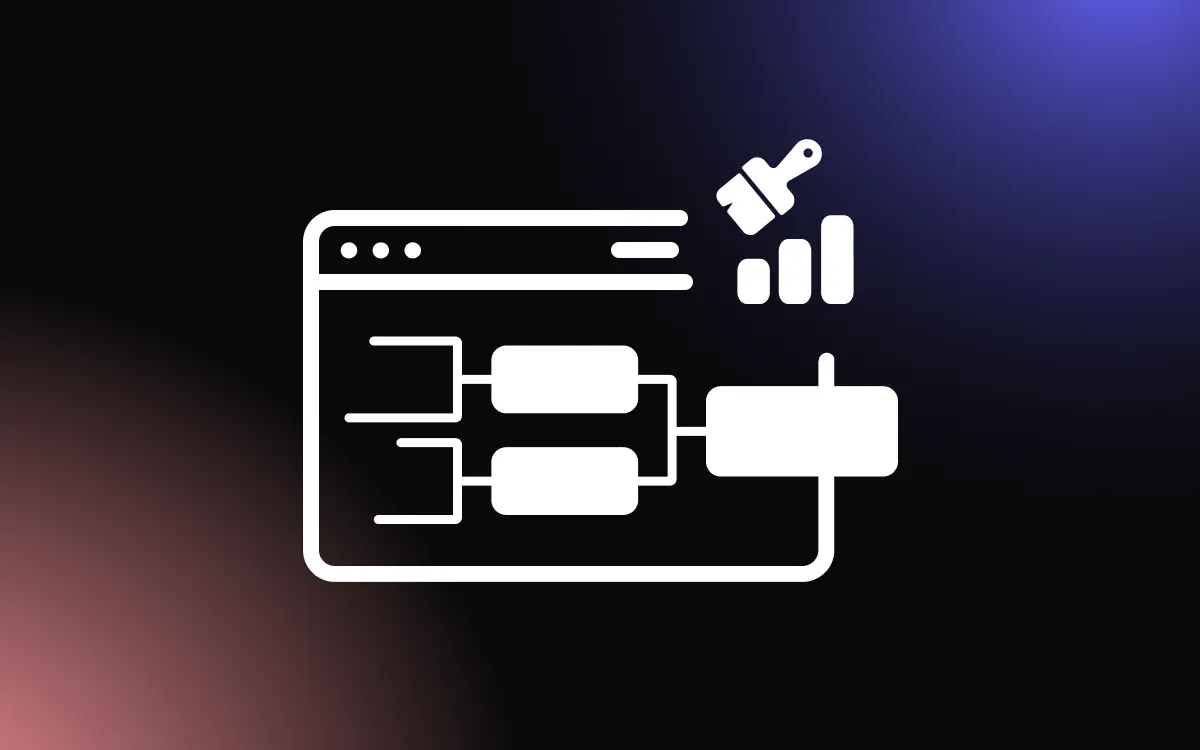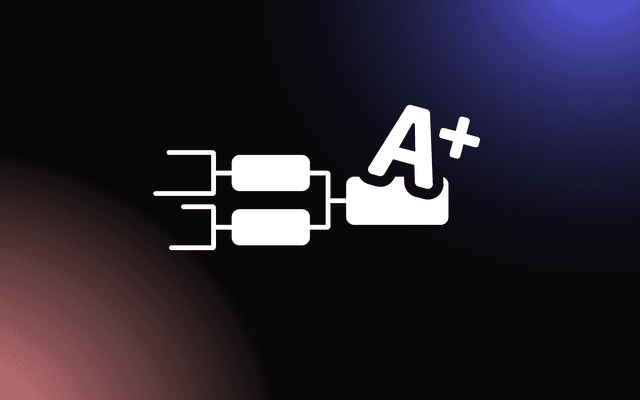
Tournament brackets have become more than just a tool for organizing sports competitions; they've evolved into cultural phenomena that significantly shape sports culture and fan communities.
From March Madness in college basketball to various other sports and gaming tournaments, brackets do more than determine who plays whom; they create narratives, foster rivalries, and build communities.
This article explores the profound impact of tournament brackets on sports culture, examining how they enhance fan engagement, influence the way games are watched and discussed, and contribute to the formation of vibrant, passionate fan communities.
The Role of Brackets in Shaping Sports Culture
Historical Evolution of Tournament Brackets
The concept of tournament brackets has a rich history, evolving significantly over time to become a staple in sports culture:
- Early Beginnings: The use of brackets can be traced back to early sporting tournaments, where they were used to organize and display matchups in a systematic way.
- Popularization in College Sports: Brackets gained significant popularity with the rise of college sports tournaments, particularly with March Madness, which brought the excitement of bracket predictions to the forefront.
- Technological Advancements: The digital era has transformed how brackets are created, shared, and interacted with, making them more accessible and engaging for a wider audience.
Brackets as a Cultural Phenomenon in Sports
Brackets have transcended their functional role, becoming a cultural phenomenon in the world of sports:
- Community Engagement: Brackets foster a sense of community and collective participation, with fans, families, and coworkers engaging in friendly competition.
- Impact on Media and Advertising: The popularity of brackets has influenced media coverage and advertising strategies, with companies and broadcasters leveraging the excitement around bracket predictions.
- Influence on Non-Sports Events: The bracket format has been adopted in various non-sports contexts, from entertainment (e.g., movie or music tournaments) to corporate and educational settings, showcasing its versatility and appeal.
- Social Interaction: Brackets encourage social interaction and debate among sports enthusiasts, contributing to the vibrant and dynamic nature of sports culture.
Enhancing Fan Engagement Through Brackets
Brackets as a Tool for Fan Participation
Brackets have become an essential tool for enhancing fan engagement in various sports and events, offering a unique and interactive way for fans to participate.
- Interactive Experience: Brackets turn the role of a spectator into an active participant. Fans not only watch the games but also engage by predicting outcomes, which adds a personal stake in the tournament.
- Inclusivity: The simplicity of filling out a bracket makes it accessible to a wide range of fans, from die-hard enthusiasts to casual viewers. This inclusivity broadens the appeal and reach of the event.
- Knowledge and Research: For some fans, brackets encourage research and deeper knowledge of the teams and players, leading to a more informed and enriched viewing experience.
- Digital Platforms: With the advent of online platforms, creating and managing brackets has become easier and more interactive, offering real-time updates and social sharing options.
The Social Aspect of Bracket Competitions
The social dynamics of bracket competitions significantly contribute to fan engagement.
- Community and Camaraderie: Bracket pools, often organized among friends, family, or coworkers, foster a sense of community and camaraderie. They create a shared experience that goes beyond just watching the games.
- Friendly Rivalry: Brackets often spark friendly rivalries, adding an enjoyable and competitive element to fan interactions.
- Social Media Interaction: Fans use social media platforms to share their brackets, celebrate victories, or lament upsets. This online interaction amplifies the communal experience of the tournament.
- Public Engagement: Many media outlets and sports platforms host public bracket challenges, which can include prizes and recognition, further incentivizing participation and engagement.
- Charitable and Corporate Initiatives: Some bracket competitions are tied to charitable causes or corporate initiatives, adding a layer of social responsibility and corporate engagement to the fan experience.
The Best Bracket Tool for Enhancing Fan Engagement

For enhancing fan engagement in tournaments and competitions, the Bracket Maker by Common Ninja is the best tool available. This online bracket-making widget is specifically designed to create a more interactive and engaging experience for fans. It supports various types of brackets, including single elimination, double elimination, and custom formats, making it versatile for different event structures.
What sets the Bracket Maker apart is its ability to integrate interactive elements like voting and predictions, which actively involve fans in the tournament process. This feature not only increases engagement but also adds a layer of excitement and personal investment for the audience.
The tool is user-friendly, allowing for easy setup and customization of brackets to fit the specific look and feel of any event or brand. With its responsive design, the brackets are accessible and visually appealing on all devices, ensuring a seamless experience for all users. For event organizers looking to boost fan participation and create a dynamic tournament atmosphere, the Bracket Maker by Common Ninja is the ideal solution.
The Psychology Behind Bracket Popularity
The Thrill of Prediction and Competition
The widespread popularity of tournament brackets, particularly in events like March Madness, can be largely attributed to the psychological thrill they offer.
- Predictive Challenge: The act of predicting outcomes in a bracket taps into the human love for challenges and problem-solving. It's a test of knowledge, intuition, and sometimes, luck.
- Competitive Excitement: Filling out a bracket and competing, either in informal groups or larger pools, stimulates the competitive spirit. It's not just about the teams competing, but also about individuals vying for the best bracket.
- Risk and Reward: The uncertain nature of sports outcomes adds an element of risk, which can be exhilarating. The potential reward, whether it's winning a pool or simply achieving bragging rights, adds to the excitement.
Emotional Connection with Teams and Players
Brackets also deepen the emotional connection fans have with teams and players.
- Personal Investment: Choosing certain teams or players in a bracket creates a personal investment in their success. Each game becomes more meaningful as it can directly impact the success of one's bracket.
- Narrative Engagement: Fans often become more engaged in the stories and narratives surrounding teams and players. Cinderella stories, underdog victories, and star performances become part of the personal journey through the bracket.
- Shared Experience: Participating in bracket challenges is often a shared experience with friends, family, or colleagues. This shared engagement can strengthen social bonds and create a sense of community.
- Emotional Rollercoaster: The ups and downs of tournament play, mirrored in the fortunes of a fan's bracket, create an emotional rollercoaster that can be both stressful and exhilarating.
Brackets and the Digital Transformation of Sports
Online Platforms and Social Media Impact
The digital era has significantly transformed how brackets are integrated into sports, enhancing accessibility and engagement.
- Ease of Access: Online platforms have made creating and participating in brackets easier than ever. Fans can join global pools, track real-time progress, and make predictions with just a few clicks.
- Enhanced Engagement: Digital tools offer interactive features like live updates, analytics, and social sharing, which heighten the engagement and excitement around brackets.
- Social Media Integration: Platforms like Twitter, Facebook, and Instagram have become hotspots for discussing brackets. Fans share their picks, celebrate victories, and engage in real-time discussions, broadening the communal experience.
- Viral Content: Memorable moments from tournaments often go viral on social media, further amplifying the reach and impact of brackets in popular culture.
The Rise of Fantasy Sports and E-sports Brackets
The concept of brackets has expanded beyond traditional sports into fantasy sports and e-sports, showcasing its adaptability and widespread appeal.
- Fantasy Sports: In fantasy leagues, brackets add an extra layer of strategy and competition, with participants selecting players and predicting outcomes based on real-world performances.
- E-sports Tournaments: The e-sports industry has embraced brackets to organize and present its tournaments, mirroring the excitement found in traditional sports brackets.
- Cross-Platform Integration: Many fantasy sports and e-sports platforms integrate seamlessly across devices, offering a cohesive experience for tracking and participating in brackets.
- Data-Driven Decisions: Advanced analytics and data available on digital platforms enable participants to make more informed decisions in their fantasy sports and e-sports brackets.
The Economic Impact of Tournament Brackets
Brackets in Advertising and Marketing
Tournament brackets, especially during high-profile events like March Madness, have a substantial impact on advertising and marketing, driving significant economic activity.
- Increased Advertising Spend: Major tournaments attract a surge in advertising spend from a wide range of businesses seeking to capitalize on the increased viewership. Brackets, being central to the tournament experience, often feature prominently in these advertising campaigns.
- Brand Engagement: Companies use brackets as a marketing tool to engage consumers, often running bracket-themed promotions or competitions. This not only increases brand visibility but also drives consumer interaction and loyalty.
- Cross-Promotional Opportunities: Brackets provide unique cross-promotional opportunities for businesses, allowing them to partner with sports organizations, media outlets, or other companies to reach wider audiences.
Financial Implications for Sports Industries
The popularity of brackets has significant financial implications for the sports industry as a whole.
- Media Rights and Broadcasting: The broadcasting rights for tournaments with popular bracket challenges are highly valuable, generating substantial revenue for sports leagues and organizations.
- Merchandising and Sales: Successful tournament runs and bracket performances can boost merchandise sales for teams, as fans purchase apparel and memorabilia to support their favorite teams or celebrate bracket victories.
- Sports Betting: Brackets have a considerable impact on the sports betting industry. The unpredictability of outcomes, especially in knockout-style tournaments, drives betting activity, contributing to the industry's economic growth.
- Economic Boost to Host Cities: Tournaments often provide an economic boost to host cities, with increased spending on hotels, restaurants, and local businesses by visiting fans and teams.
Building Community and Rivalries Through Brackets
Fostering Local and Global Fan Communities
Tournament brackets have a unique ability to build and strengthen both local and global fan communities, uniting people through shared interests and friendly competition.
- Local Community Engagement: Brackets often bring local communities together, especially in college towns or cities with a strong sports culture. Local businesses, schools, and groups participate in bracket pools, fostering a sense of unity and local pride.
- Global Connectivity: In today's digital world, brackets extend their reach globally. Fans from different parts of the world connect online, sharing predictions, discussing games, and celebrating victories, thus creating a global fan community.
- Social Media Interaction: Platforms like Twitter, Facebook, and sports forums facilitate discussions and interactions among fans, further strengthening the sense of community and shared passion.
Rivalries and Storylines Created by Brackets
The structure of brackets inherently creates rivalries and compelling storylines, adding to the excitement and engagement of fans.
- Traditional Rivalries: Brackets often set the stage for historic rivalries to play out, adding an extra layer of intensity and excitement to the games.
- New Rivalries: The knockout nature of brackets can lead to unexpected matchups, creating new rivalries and storylines that captivate fans' attention.
- Cinderella Stories: Underdog teams making unexpected runs in the tournament often become fan favorites, creating compelling narratives that captivate both local and global audiences.
- Bracket Busters: Unexpected outcomes that bust popular bracket predictions become major talking points, fueling debates and discussions among fans.
- Personal Rivalries: In smaller pools, like office or family brackets, personal rivalries emerge, adding a fun and competitive element to the experience.
The Influence of Brackets on Sports Broadcasting and Media
Media Coverage and Analysis Centered Around Brackets
The presence of brackets, particularly in high-profile tournaments like March Madness, has significantly shaped sports media coverage and analysis.
- Pre-Tournament Analysis: In the lead-up to tournaments, sports networks and websites dedicate extensive coverage to bracket predictions and analysis. This includes expert opinions, statistical breakdowns, and team comparisons.
- Interactive Media Platforms: Many sports media outlets have developed interactive online platforms where fans can fill out and submit brackets, track their progress, and compare their picks with experts and celebrities.
- Real-Time Updates and Discussions: During the tournament, media coverage often includes real-time updates on bracket standings, highlighting major upsets and their implications for overall bracket predictions.
- Post-Game Analysis: Post-game analysis frequently revolves around the impact of game outcomes on brackets, discussing surprises, and evaluating predictions.
The Role of Brackets in Sports Journalism
Brackets have also influenced the nature of sports journalism and storytelling.
- Narrative Focus: Journalists often focus on the narratives created by brackets, such as underdog stories, potential Cinderella runs, and the drama of upset victories.
- Fan Engagement: Brackets provide a unique angle for engaging fans in the storytelling process. Journalists often incorporate fan reactions, bracket challenges, and social media trends into their coverage.
- Data-Driven Journalism: The popularity of brackets has led to a more data-driven approach in sports journalism, with a focus on analytics and probabilities in predicting outcomes.
- Cross-Platform Storytelling: The coverage of brackets extends across various media platforms, including television, online, podcasts, and social media, offering a multi-dimensional approach to sports storytelling.
Challenges and Criticisms of Bracket Culture
Addressing Issues of Bias and Fairness
While bracket culture has become a beloved aspect of sports tournaments, it is not without its challenges and criticisms, particularly regarding issues of bias and fairness.
- Seeding Controversies: The process of seeding teams in a bracket can be contentious, with debates over biases in the selection and ranking processes. Critics argue that this can lead to unfair matchups and disadvantages for certain teams.
- Impact on Smaller Programs: There's a concern that the focus on brackets and big tournaments favors larger, more established programs, potentially overshadowing smaller or less-known teams and conferences.
- Media Bias: Media coverage can sometimes be skewed towards more popular or higher-seeded teams, influencing public perception and potentially impacting the impartiality of the tournament.
The Pressure on Athletes and Teams
The intense focus on brackets and tournament outcomes also places considerable pressure on athletes and teams.
- Performance Pressure: Athletes often face immense pressure to perform, not just for team success but also because of the widespread public and media attention on brackets and predictions.
- Mental Health Considerations: The high-stakes environment of bracket-driven tournaments can impact athletes' mental health, with the pressure to win sometimes leading to stress and anxiety.
- Impact on Team Dynamics: The emphasis on advancing in brackets can influence team strategies and dynamics, with coaches and players sometimes prioritizing short-term success over long-term development.
- Expectations from Fans and Alumni: Teams often face heightened expectations from fans and alumni, especially in college tournaments, where success in the bracket can significantly impact a school's reputation and support.
The Future of Brackets in Sports Culture
Emerging Trends and Innovations
The future of brackets in sports culture is likely to be shaped by several emerging trends and technological innovations:
- Digital and Mobile Technologies: Advancements in digital and mobile platforms will continue to revolutionize how fans interact with brackets, making participation more accessible and engaging.
- Augmented and Virtual Reality: AR and VR technologies could offer immersive experiences, allowing fans to engage with brackets and games in innovative ways.
- Data Analytics and AI: Enhanced data analytics and AI will provide deeper insights into team performances and player statistics, potentially refining how brackets are filled out and predictions are made.
- Social Media Integration: Continued integration with social media platforms will likely increase, facilitating more interactive and community-driven bracket experiences.
Adapting to Changing Fan Dynamics
The evolution of brackets must also adapt to the changing dynamics of sports fandom:
- Globalization of Sports: As sports continue to gain global popularity, brackets might include more international tournaments, appealing to a broader audience.
- Inclusivity and Accessibility: There will be a greater focus on making brackets more inclusive and accessible to diverse groups of fans, ensuring that everyone can participate and enjoy the experience.
- Fan Engagement Strategies: Sports organizations and media outlets will likely develop new strategies to keep fans engaged with brackets year-round, not just during specific tournaments.
- E-sports Integration: With the rise of e-sports, we may see an increase in brackets associated with competitive gaming events, further expanding the scope of bracket culture.
Conclusion
The influence of tournament brackets on sports culture and fan communities is both profound and far-reaching. As we've seen, brackets do more than organize competitors; they transform the way fans interact with the sport, each other, and the broader community. They create a shared language and experience, turning individual games into chapters of a larger story that captivates and unites fans.
Whether it's the suspense of predicting outcomes, the thrill of unexpected victories, or the camaraderie of shared experiences, brackets have become integral to the sports experience. They encapsulate the drama, unpredictability, and communal spirit that make sports so compelling. As sports and gaming continue to evolve, the role of brackets is likely to grow, continuing to shape and enrich the culture and communities they bring together.



